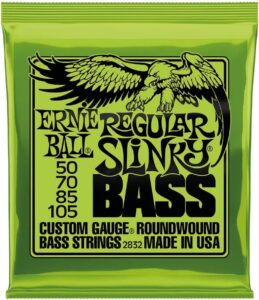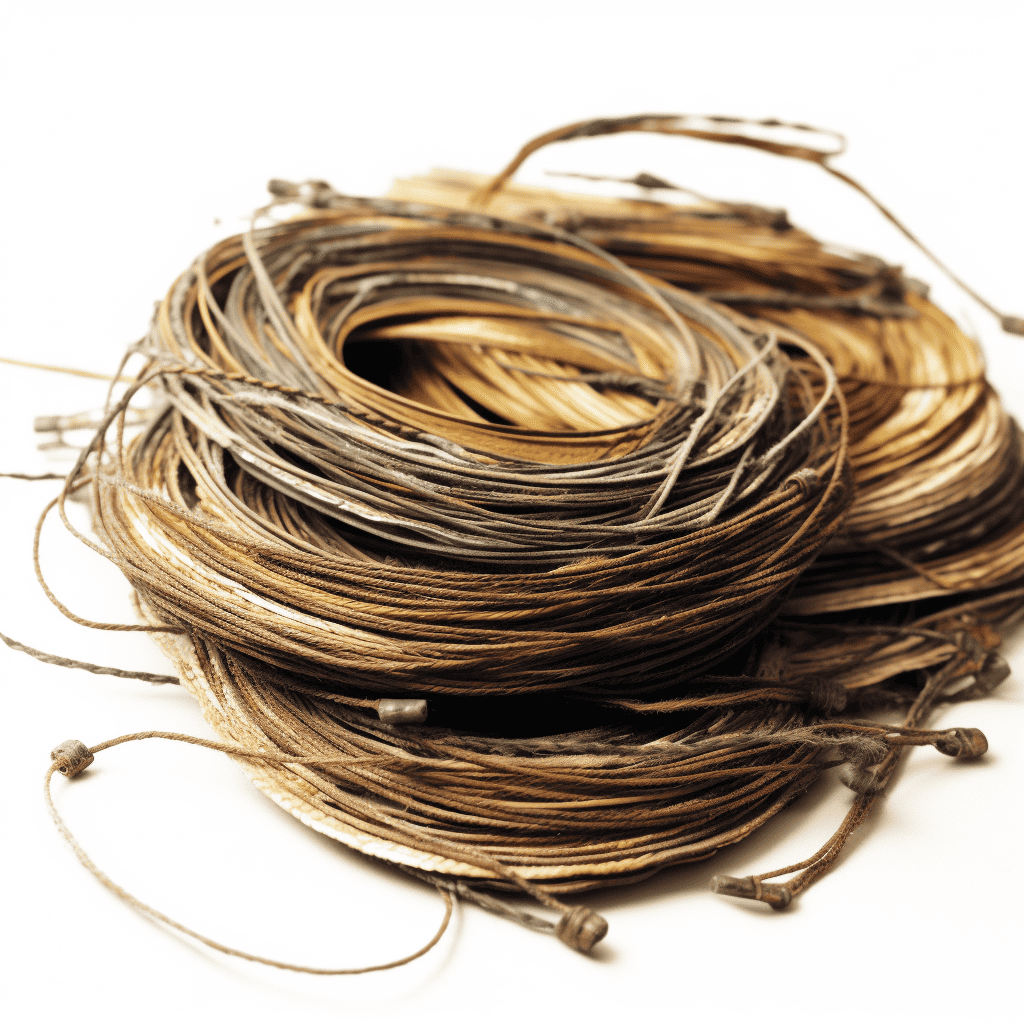Bassists, especially those new to the world of music, often wonder about the life of their strings. Can they be removed, stored, and used again without affecting sound quality and dynamics? This is a valid question and one that carries some intriguing answers.
The short answer is YES, you can reuse bass guitar strings. Bass guitar strings can be removed, preserved, and then re-strung later. If appropriately cared for, these strings can serve you well for years. Some bass players have even shared experiences of playing with strings they’d removed and stored two decades ago, swearing by the richer tones they produce over time.
Bass Strings: A Peek into their Anatomy

Before delving into the ‘how’, let’s understand the ‘what’. Bass strings, primarily the Roundwound type, are most commonly constructed from a steel core string with a wire wrapping, which might be steel or nickel. Nickel provides a softer tone, while steel gives that bright pop many bassists adore. While Roundwound strings are prevalent, there are also:
- Flatwound
- Tapewound
- Groundwound (or Half-round)
I’m a big fan of D’Addario NYXL Nickel Wounds, but several brands out there could fit your taste and style.
One thing to note is bass strings are robust and thick, setting them apart from other guitar strings. This thickness also provides an advantage – they’re less prone to breaking and can withstand rust better.
Choosing the Right Bass Strings: Top 4 Options
With so many brands and types of bass strings available in the market, it can be overwhelming to pick the right one. Let’s delve into four of the best bass guitar string options that cater to different playstyles and needs.
D’Addario EXL170 Nickel Wound Bass Guitar Strings:

- Features: These roundwound strings are made of nickel-plated steel, providing a bright tone with deep lows.
- Best For: Bass players looking for versatility. They’re suitable for various genres, from jazz to rock.
- Why Choose: D’Addario’s reputation for consistent quality makes these strings a favorite among many bassists.
Ernie Ball Regular Slinky Nickel Wound Bass Set:

- Features: Made from nickel-plated steel wire wrapped around tin-plated hex-shaped steel core wire. They offer a balanced tone.
- Best For: Players who prefer a smooth feel with a balanced sound suitable for blues, jazz, or rock.
- Why Choose: Ernie Ball is a trusted name in the music world, and these strings reflect their commitment to quality.
Rotosound RS66LD Swing Bass 66 Stainless Steel:

- Features: These are stainless steel roundwound strings. They’re known for their bright sound and sustain.
- Best For: Players wanting punchy mids and high-end clarity, perfect for rock and metal genres.
- Why Choose: Rotosound’s Swing Bass strings have been popular since the ’60s, and utilized by many iconic bassists over the decades.
GHS Strings M3045 4-String Bass Boomers:

- Features: Nickel-plated steel wrap provides brilliance, volume, sustain, and strength.
- Best For: Those wanting versatility, with a string that can handle aggressive playing techniques.
- Why Choose: GHS’s Boomers series is known for its durability and lasting tone, making it a favorite among touring musicians.
Factors Influencing Your Choice of Bass Strings

Now that we’ve highlighted some top choices for bass strings, it’s also essential to understand the factors that should influence your decision. Here’s what you should consider:
String Gauge
What it is: Gauge refers to the thickness of the string. Typically, bass strings are labeled from lightest to heaviest.
Why it matters: A lighter gauge means the string will be thinner, which often results in a brighter tone. Thicker strings (heavy gauge) are stiffer and produce a fuller, deeper tone. Your choice should be based on the kind of sound you prefer and the genre you play.
String Materials
What it is: As mentioned earlier, the core and wrap materials significantly impact the sound and feel of the string. Nickel and stainless steel are popular choices, but there are also strings made of nylon, chrome, and other materials.
Why it matters: Different materials provide varied tonal qualities. For instance, stainless steel strings are brighter and offer more attack, while nickel-wound strings are smoother and have a warmer sound.
Scale Length
What it is: The scale length of a bass guitar is the distance between the bridge and the nut. Basses come in short, medium, long, and extra-long scales.
Why it matters: Strings are designed for specific scale lengths. It’s crucial to choose a string that matches your bass guitar’s scale to ensure proper tension and playability.
Coated vs. Non-Coated
What it is: Some bass strings come with a thin coating that protects them from dirt, sweat, and other elements.
Why it matters: Coated strings tend to last longer and are resistant to corrosion. They might be slightly more expensive but can be cost-effective in the long run due to their durability.
Bass String Care 101
If you want your bass strings to have a long life, maintenance is essential. Here are some tips to get started:
Cleanliness Starts with YOU
Before even touching your guitar, ensure your hands are clean. Sweat, coupled with the oils and dirt from your fingers, can fast-track the oxidation process on your strings. Cleaner hands can reduce the pace at which your strings lose their sparkle.
Proper Equipment for String Cleaning
After an intense jamming session, a quick wipe-down can do wonders. MusicNomad, among others, offers cleaning liquids designed for guitar strings.
There are also specialized cleaning pads that make the cleaning process efficient. By wiping these pads up and down your strings, you can help maintain their sound quality.
The Boiling Trick

A lesser-known trick is boiling bass strings to remove grime and deposits. If you decide to boil your strings, do it one at a time and for about 15 minutes. The heat and agitation help to remove debris from the string’s surface.
Methanol Soak: A Deep Cleanse
Another deep-cleaning method involves soaking the strings in Methanol. A day-long soak can strip away the accumulated oxidation, giving your strings a fresh start. Some bassists believe this method also tightens up the strings, although this observation varies.
Taking Care of Your Bass Strings: Advanced Tips
While we’ve discussed some fundamental ways to maintain your bass strings, a few advanced techniques can ensure they remain in top condition:
- String Conditioners: Products like the “Fret-Fast” can be applied to the strings and fretboard. They not only clean but also lubricate the strings, enhancing playability.
- Ultrasonic Cleaners: These devices use ultrasonic waves in a cleaning solution to remove dirt and grime from the strings.
- Storage: If you’re planning to keep strings off the bass for a long time, consider vacuum-sealing them to prevent any potential oxidization.
Why Preservation Matters: The Sound Quality
One of the main concerns with removing and reusing bass strings is the potential change in sound quality. While fresh strings produce a brighter and more resonant tone, older strings, especially those that have been preserved correctly, can yield a warmer, mellower sound. Some musicians prefer this aged sound, believing it adds character to their music.
The Lifespan of a Bass String

It’s remarkable how long a bass string can last if taken care of correctly. While many factors can determine a string’s lifespan, like the frequency of play and playing style, proper maintenance can significantly extend it. Preservation doesn’t only mean they’ll last longer but that their sound, resonance, and feel under your fingers remain consistent.
Knowing When to Change Your Strings
Even with the best maintenance practices, there will come a time when you’ll need to change your strings. Here’s how to know:
- Tonal Difference: Over time, the string might lose its bright resonance, sounding dull or flat.
- Physical Wear: If you notice visible signs of wear, such as rust or discoloration, it’s time.
- Playability: Strings become harder to play and might not hold tuning well.
Finding Your Perfect Groove: The Bass String Journey
In the realm of bass guitar playing, the significance of strings cannot be overstated. They are the lifeline of your instrument, influencing its tone, playability, and overall character. While it might seem trivial to think about removing, reusing, or choosing the right type of strings, the journey of finding that ‘perfect’ set can be transformative for your music.
Whether you’re preserving old strings to retain their cherished tones or experimenting with new materials to find the right groove, each decision is a step toward mastering your sound. With various options and maintenance techniques at your fingertips, the world of bass guitar strings offers an endless avenue for exploration. So, as you dive deeper into this world, remember to trust your instincts, keep an open mind, and most importantly, enjoy the rich melodies you create along the way. Happy playing!
Frequently Asked Questions (FAQs)
1. Can I reuse my bass guitar strings after removing them?
Yes, you can reuse bass guitar strings after removing them. With proper care, cleaning, and preservation methods, such as boiling or soaking in methanol, you can extend the life of your bass strings.
2. How often should I change my bass strings?
How often you should change your strings depends on how frequently you play and your tonal preferences. Some players prefer the sound of aged strings, while others change them monthly to maintain a bright tone. A good rule of thumb is to assess the sound and feel; if they start to sound dull or lose playability, it might be time to change them.
3. Is boiling bass strings safe?
Boiling bass strings can remove dirt and bring back some of the brightness, making it a popular method among bass players. However, always ensure to boil one string at a time and handle it with care to avoid potential injury.
4. Do different materials of bass strings produce different tones?
Yes, different materials can produce varying tones. For instance, nickel-wound strings tend to offer a warmer tone, while stainless steel strings are brighter and more punchy.
5. Can I use guitar cleaning liquids on my bass strings?
Yes, since many bass and guitar strings share similar materials, you can often use guitar cleaning liquids on bass strings. However, always read the label or manufacturer’s instructions to be sure.
6. Does the thickness of the bass string affect its durability?
Thicker bass strings are typically more durable due to their resistance to oxidation and snapping. They can also withstand more tension, but their tone and playability might differ from thinner strings.
7. Which bass strings are best for a beginner?
Beginners might prefer roundwound strings as they are common and versatile. However, the best string is subjective and depends on individual preferences in terms of playability and tone. Trying out various brands and types can help identify the most suitable choice.
